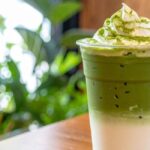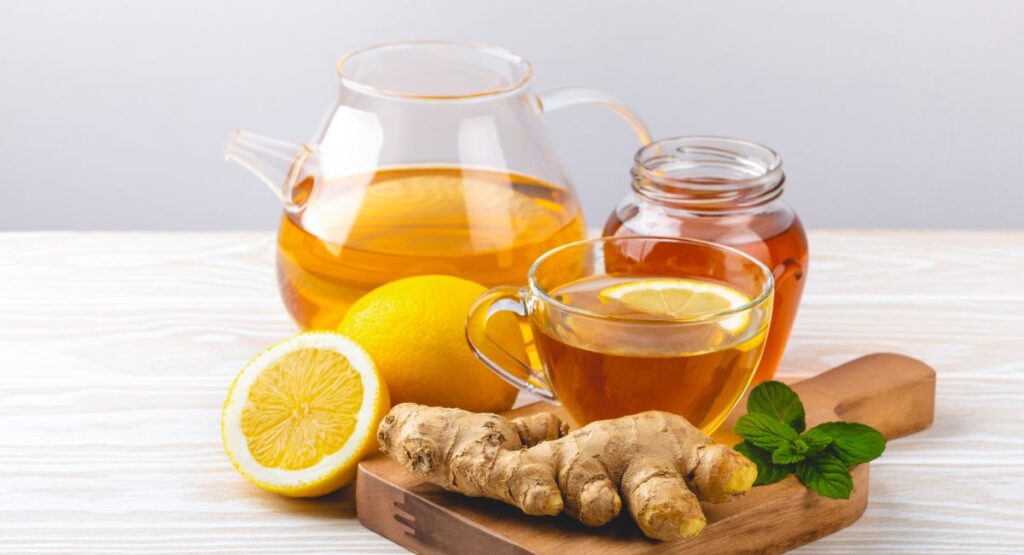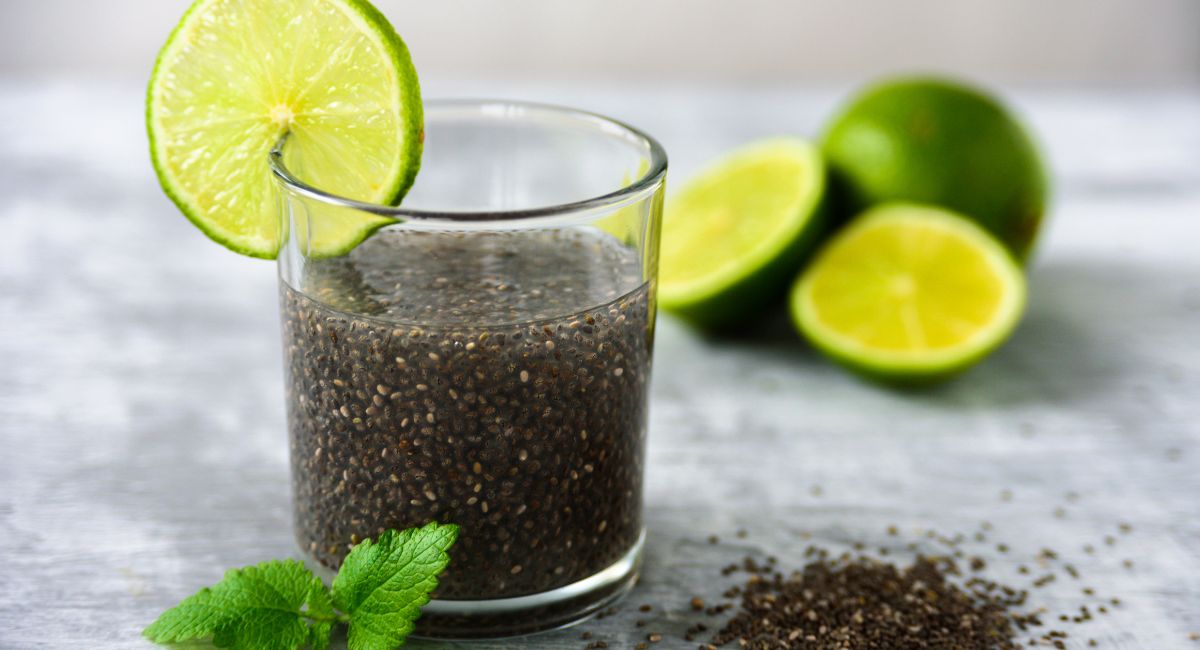As someone who values healthy living, I’m always on the lookout for natural remedies to incorporate into my daily routine. One of my go-to ingredients is Ginger, that’s been used for centuries in traditional medicine: a root known for its medicinal properties.

This ancient root has been used to alleviate nausea and reduce inflammation, making it a staple in many cultures. Its growing popularity in modern times is a testament to its versatility and effectiveness as a natural remedy.
I appreciate the importance of understanding the benefits of this root, and I’m excited to share its advantages with you.
The Ancient Root with Modern Benefits
Ginger has been used for centuries in traditional medicine and cuisine, originating in Southeast Asia. Its use spread across the globe, with ancient civilizations such as the Greeks and Romans utilizing it for its medicinal properties. The historical significance of this spice is a testament to its enduring value.
Ginger’s Nutritional Profile
This root is rich in vitamins, minerals, and antioxidants, making it a nutrient-dense addition to any diet. It contains vitamin C, magnesium, and potassium, among other essential nutrients. The nutritional profile of this root supports its role as a superfood.
| Nutrient | Amount per 100g |
| Vitamin C | 5mg |
| Magnesium | 43mg |
| Potassium | 415mg |
Why Ginger is Considered a Superfood
It’s considered a superfood due to its high nutritional value and potential health benefits.
Ginger has been used for centuries in traditional medicine, and its modern applications continue to grow.
Incorporating this powerful ingredient into my diet has numerous benefits, from improving digestion to reducing inflammation.
Powerful Medicinal Properties
This spice’s impressive nutritional profile and bioactive compounds contribute to its powerful medicinal properties. As a natural anti-inflammatory agent, it has been widely studied for its potential health benefits. Its versatility makes it a valuable ingredient in various culinary and medicinal applications.
Contain Anti-Inflammatory Compounds
Fresh Roots contains potent anti-inflammatory compounds, including gingerols and shogaols, which have been shown to reduce inflammation and alleviate pain. These compounds work by inhibiting the production of pro-inflammatory chemicals in the body, making this root as a potential natural remedy for inflammatory conditions.
Other Active Ingredients
It’s a key active ingredient in this, is responsible for its anti-inflammatory properties. Other active compounds, such as shogaol and paradol, also contribute to medicinal effects. These ingredients have been shown to have antioxidant, antimicrobial, and anti-inflammatory properties, making this root a versatile natural remedy.
Antioxidant and Antimicrobial Effects
Its antioxidant properties help protect the body against oxidative stress and cell damage. Its antimicrobial effects also make it effective against certain bacteria and fungi, further enhancing its medicinal value. The combination of these properties makes this root a valuable ingredient in promoting overall health and well-being. You can check our Skin Care home remedies, which will help you to live for better life.
| Medicinal Property | Benefit |
| Anti-Inflammatory | Reduces pain and inflammation |
| Antioxidant | Protects against cell damage |
| Antimicrobial | Effective against bacteria and fungi |
Your Natural Remedy for Nausea
With its rich history and proven benefits, it stands out as a natural remedy for nausea that is both accessible and easy to incorporate into daily life. I’ve personally experienced the relief this spice can offer, especially during instances of motion sickness.
1- Morning Sickness During Pregnancy
For many pregnant women, morning sickness is a challenging symptom that can significantly impact daily life. Ginger is effective in alleviating nausea during pregnancy, offering a natural alternative to medication. Studies have indicated that it can help reduce the severity of morning sickness, making it a valuable option for expectant mothers.
2- Motion Sickness and Travel Nausea
Traveling can often lead to motion sickness, causing discomfort and nausea. Tea or Candies can be a traveler’s best friend, providing quick relief from these symptoms. The active compounds in it help soothe the stomach, reducing the likelihood of nausea.
3- Post-Surgery and Chemotherapy-Induced Nausea
Nausea is a common side effect of both surgery and chemotherapy. This superfood root has been recognized for its ability to reduce chemotherapy-induced nausea, improving the quality of life for patients undergoing treatment. Its anti-inflammatory properties also aid in recovery post-surgery.
4- How to Use it for Nausea Relief
There are several ways to use fresh ginger in hot water. You can also incorporate this into your diet through various ginger recipes, from soups to baked goods. For a more concentrated dose, shots or supplements can be an effective option.
“This can be a game-changer for me during travel. I always carry ginger tea bags with me,” says a frequent traveler. Such testimonials highlight the practical applications and benefits of using it for nausea.

Digestive Health Benefits
As someone who values a healthy digestive system, I’ve found it to be an indispensable ally in maintaining overall wellness. Ginger’s active compounds have been shown to positively impact digestion, reducing discomfort and promoting a balanced gut.
1- Improving Digestion and Reducing Bloating
This root contains gingerol and other compounds that stimulate digestion and help reduce bloating. Enhancing digestive processes can alleviate symptoms of indigestion and discomfort after meals.
2- Managing IBS and Chronic Digestive Issues
For individuals dealing with Irritable Bowel Syndrome (IBS) or chronic digestive issues, anti-inflammatory properties can provide significant relief. Regular consumption may help manage symptoms and improve quality of life.
3- Ginger Tea for Optimal Digestive Support
One of the simplest ways to harness the digestive benefits is through the consumption of tea. By steeping fresh root pieces in hot water, you can create a soothing, digestive-friendly beverage that can be enjoyed throughout the day.
To maximize the digestive benefits, consider incorporating it into your daily routine, whether through tea, cooking, or supplements. With its natural properties and gentle action, ginger can be a valuable component of a comprehensive approach to digestive health.

Pain Relief and Anti-Inflammatory Applications
I’ve found this incredibly helpful in managing pain and inflammation. The active compound particularly gingerol, has potent anti-inflammatory properties that make it an effective natural pain reliever.
1- Muscle Soreness and Exercise Recovery
Its anti-inflammatory benefits can help alleviate muscle soreness after exercise. Studies have shown that ginger supplements can reduce muscle pain by up to 25%. Active compounds work by reducing inflammation and promoting recovery, making it a popular choice among athletes.
2- Menstrual Cramps and PMS Relief
This root is effective in reducing menstrual cramps and other symptoms associated with PMS. The anti-inflammatory properties help to relax the uterine muscles, reducing pain and discomfort.
3- Joint Pain, Arthritis, and Chronic Inflammation
It can also help alleviate joint pain and reduce chronic inflammation associated with conditions like arthritis. Regular consumption may help to improve symptoms and quality of life for those suffering from these conditions.
4- Topical vs. Internal Use for Pain Management
Both topical and internal uses have their benefits for pain management. Topical application, such as ginger creams or gels, can provide localized relief, while internal consumption, like ginger tea or supplements, can offer systemic benefits. A comparison of the two methods is shown in the table below:
| Method | Benefits | Drawbacks |
| Topical | Localized relief, quick absorption | Limited to surface-level pain |
| Internal | Systemic benefits, long-term relief | May take longer to feel effects |

Chia Seeds: 7 Proven health benefits From Weight Loss to Better Hydration
Despite their small size, chia seeds are a treasure trove of nutrients, rich in omega-3 fatty acids, protein, fiber, and minerals that help support heart health, digestion, weight loss, and hydration.
Incorporating Into Your Daily Diet
With its numerous health benefits, it can be easily added to your daily meals.
1- Fresh vs. Dried vs. Powdered Forms
This root comes in various forms, each with its own unique uses and benefits. Fresh ginger is ideal for cooking and making teas, while dried ginger can be used in baking and as a spice. Powdered ginger is another convenient option for adding to recipes or making ginger-based drinks.
2- Easy Tea Recipes
Making a tea is a simple process that involves steeping fresh slices in hot water. You can enhance the flavor by adding lemon, honey, or other spices like cinnamon or cardamom. I find that a warm cup of this tea is a comforting way to start the day or unwind in the evening.
3- Cooking Recipes
- Pairs well with sweet ingredients like sugar, honey, and molasses. Try making a cakes or cookies for a delicious treat.
- In savory cooking, it is often used to add depth to dishes like soups, stews, and curries. It can also be used in marinades for meat and poultry, enhancing the flavor and tenderizing the protein.
- A concentrated dose can be consumed on its own or added to other beverages like smoothies.
Final Verdict
As I’ve explored the numerous benefits of ginger, from its anti-nausea and anti-inflammatory effects to its digestive health benefits and pain-relieving properties, I’m convinced that incorporating the ancient remedy into my daily routine has been a game-changer for my overall health and well-being.
By incorporating this powerful ingredient into your daily life, you can also reap its rewards. With its rich nutritional profile and medicinal properties, this root is a simple yet effective way to enhance your overall health and well-being. I encourage you to make ginger a regular part of your wellness routine and experience the health benefits for yourself.
FAQ
You can incorporate this spice into your daily diet by consuming it in various forms, such as fresh, dried, or powdered. You can make ginger tea, add it to your cooking, or use it in sweet and savory dishes. Shots and wellness drinks are also a great way to get a concentrated dose.
Yes, this root is effective in alleviating nausea during pregnancy, including morning sickness. However, it’s always best to consult with your healthcare provider before consuming this or any other natural remedy during pregnancy.
It contains anti-inflammatory compounds, including gingerol, which can help alleviate pain and reduce inflammation. It can be used topically or consumed internally to help manage pain, including menstrual cramps, muscle soreness, and joint pain.
While it is a generally considered safe, consuming high doses of ginger supplements can cause stomach upset, heartburn, and diarrhea. It’s always best to consult with your healthcare provider before taking any supplements, especially if you have any underlying health conditions or are taking medications.
Yes, fresh ginger root is a great way to add flavor and nutrition to your cooking and tea. Simply peel and chop or grate the ginger, and use it in your desired recipe. You can also make ginger tea by steeping fresh ginger in hot water.